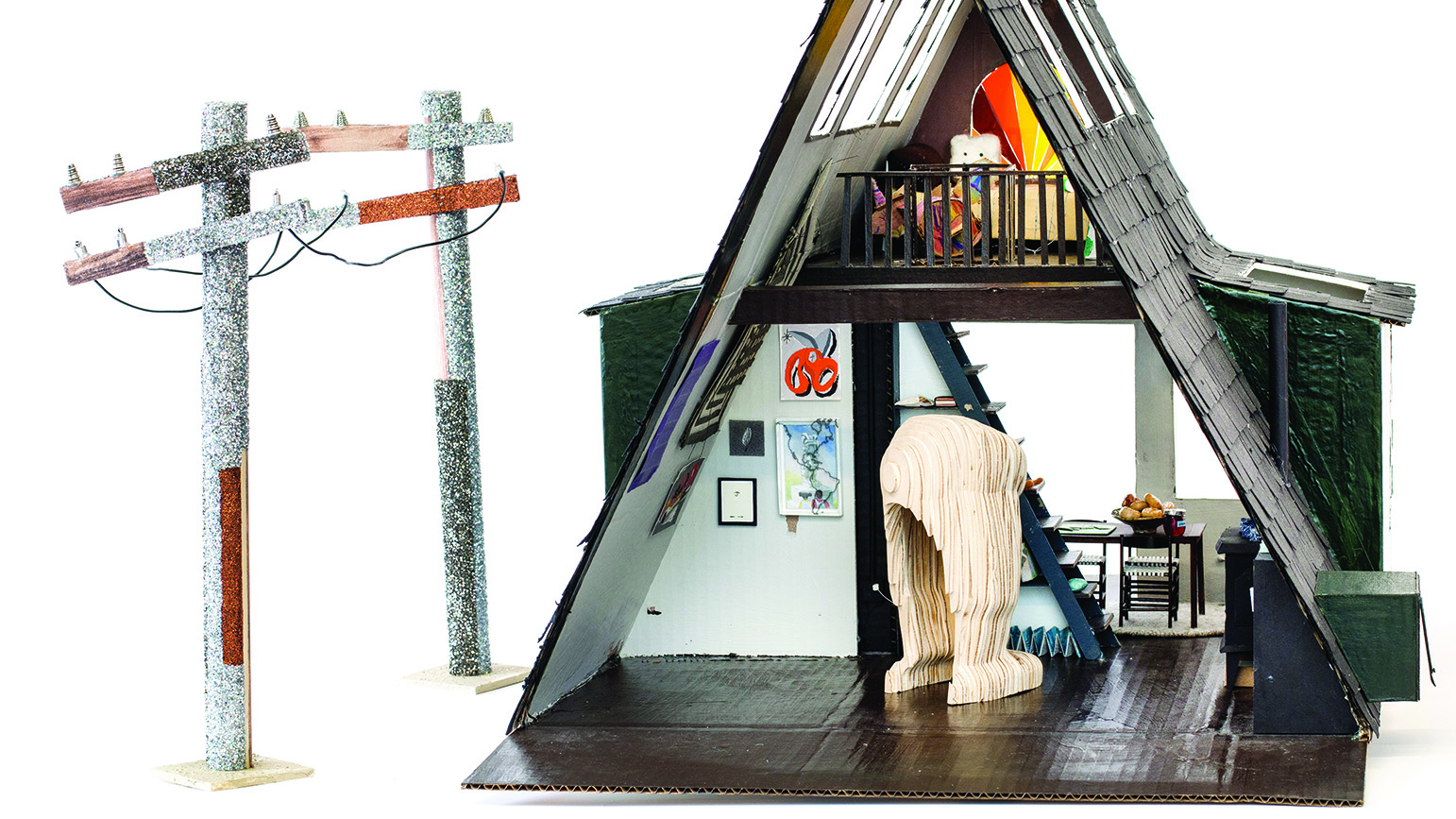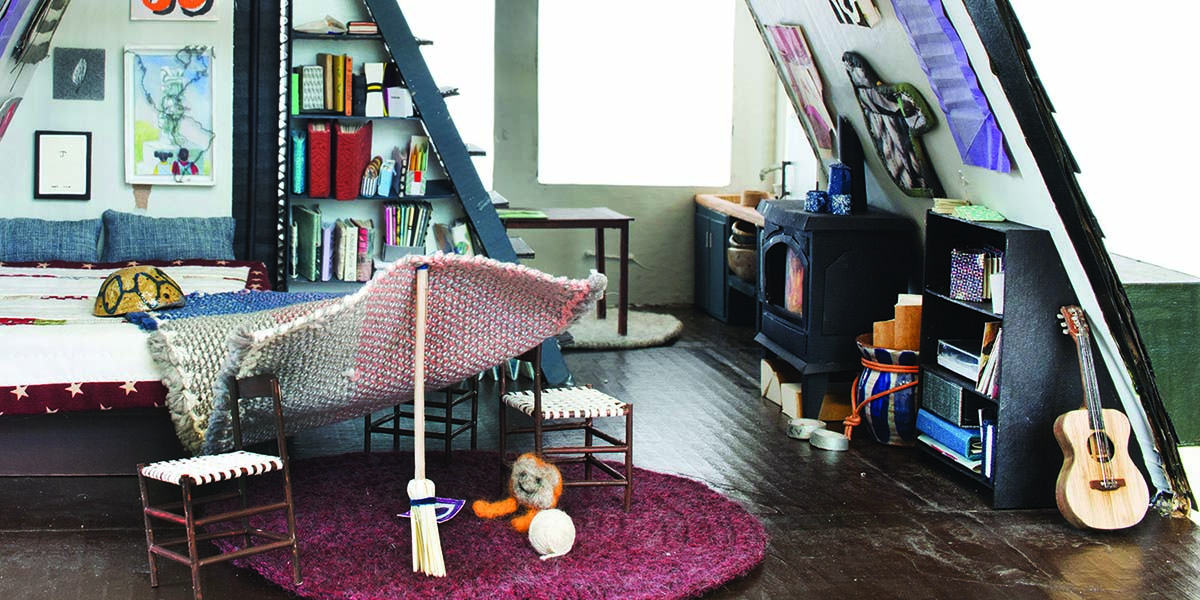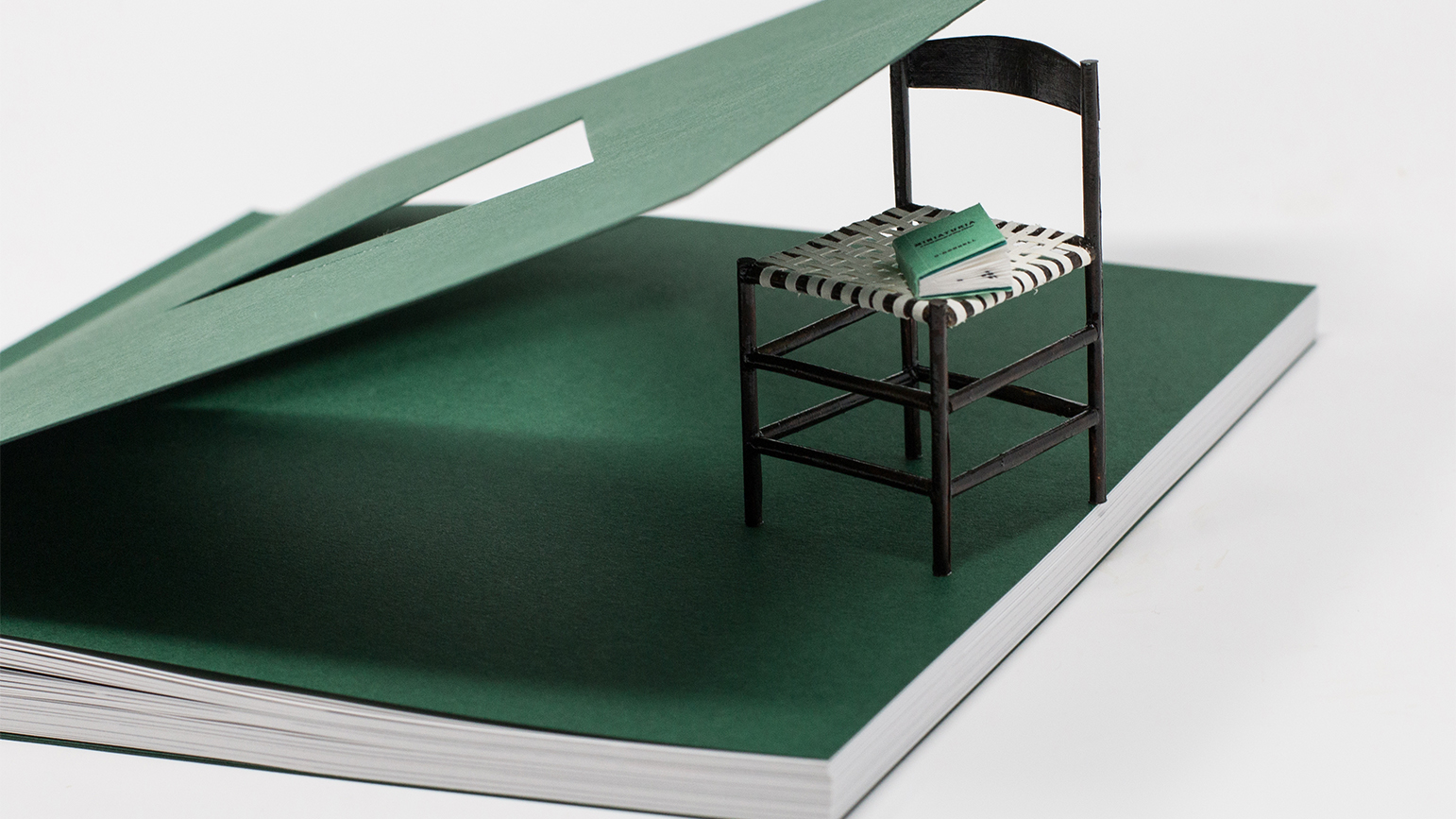
When Professor Imin Yeh was struggling with postpartum insomnia, her partner Paul gave her a piece of advice he learned from his lifelong fight with sleeplessness: imagine a place and build it in your mind. In the grips of the early COVID-19 pandemic, Yeh imagined an A-frame lakeside cabin, a place of imaginary comfort in an anxiety-filled reality.
From these late-night visions, she began constructing her cabin from found materials around her house: bits of takeout containers, leftover house paint, and the cardstock packaging of processed foods she affectionately named “snackboard.” In a perfect 1:12 scale, she began to create the cabin’s furnishings—the dining table and chairs, her grandmother’s trusty rice cooker, and even a tiny broom and Swiffer sweeper—during her daughter’s naptime or during the long Zoom meetings that dominated quarantine. As she built her dreamcabin, she shared her progress on her Instagram account.
Once the cabin started filling with the everyday necessities, friends started to send her tiny versions of their artwork, some offered as gifts and others as art exchanges. Early gifts included a painting of scissors from former student Jack Taylor, a framed and altered postage stamp from Professor Clayton Merrell, and a drawing of a mother and child from her graduate school friend Maja Ruznic. Yeh said this drawing holds a special place in dreamcabin’s collection. “As another new mother, we found ourselves reunited after giving birth, talking about the beautiful bitterness that is both motherhood and being an artist.”

From these organic exchanges, she put out an open call for miniature artist books, sending each participant a book of her own in exchange. Soon, tiny packages began arriving from across the United States and even beyond. Today, dreamcabin has more than 100 artworks.
dreamcabin and its extensive collection of artworks is now collected in a new book featuring essays by MFA alum Adam Milner, curator Jodi Throckmorton, and Yeh. BFA alum Jacquelyn Johnson photographed the cabin and artwork collection and Office Associate Leslie Gordon copy edited the essays.
Yeh said she has never met about a third of the artists who sent her artist books. This generosity to gift work to other artists is rooted in the long history of exchange within the printmaking and artist book communities. “People build their practices on exchanges and trading. It comes from the very old social practice of sharing,” she said.
As artwork began arriving on her doorstep, it quickly became clear how much thought and care artists had put into their submissions. Rather than create scaled-down digital copies of existing works, the vast majority of artists created something handmade, requiring a great deal of thoughtfulness and craftsmanship.

“What surprised me most was how many artists just wanted to play,” Yeh said, something that was made possible by the small-scale and low stakes of dreamcabin. Even among more established and commercially successful artists, Yeh said she was surprised by the excitement to contribute to the collection.
While rooted in a long tradition of artist exchange, dreamcabin is equally a product of a specific moment in time. The cabin isn’t a sprawling mansion outfitted with the latest technology, but rather a quiet place to escape the technology that came to dominate our lives during pandemic lockdowns. Yes, you may still have to sweep in this imaginary world, but maybe you will take a bit of pleasure in manual work with simple tools. The cabin is not outfitted with rooms in which to escape, but rather a simple communal table where you can eat and create artwork together. What began as an intensely personal expression found widespread resonance with so many others. Through artmaking and sharing, Yeh has invited dozens of friends and strangers to join her in her quiet lakeside retreat.




